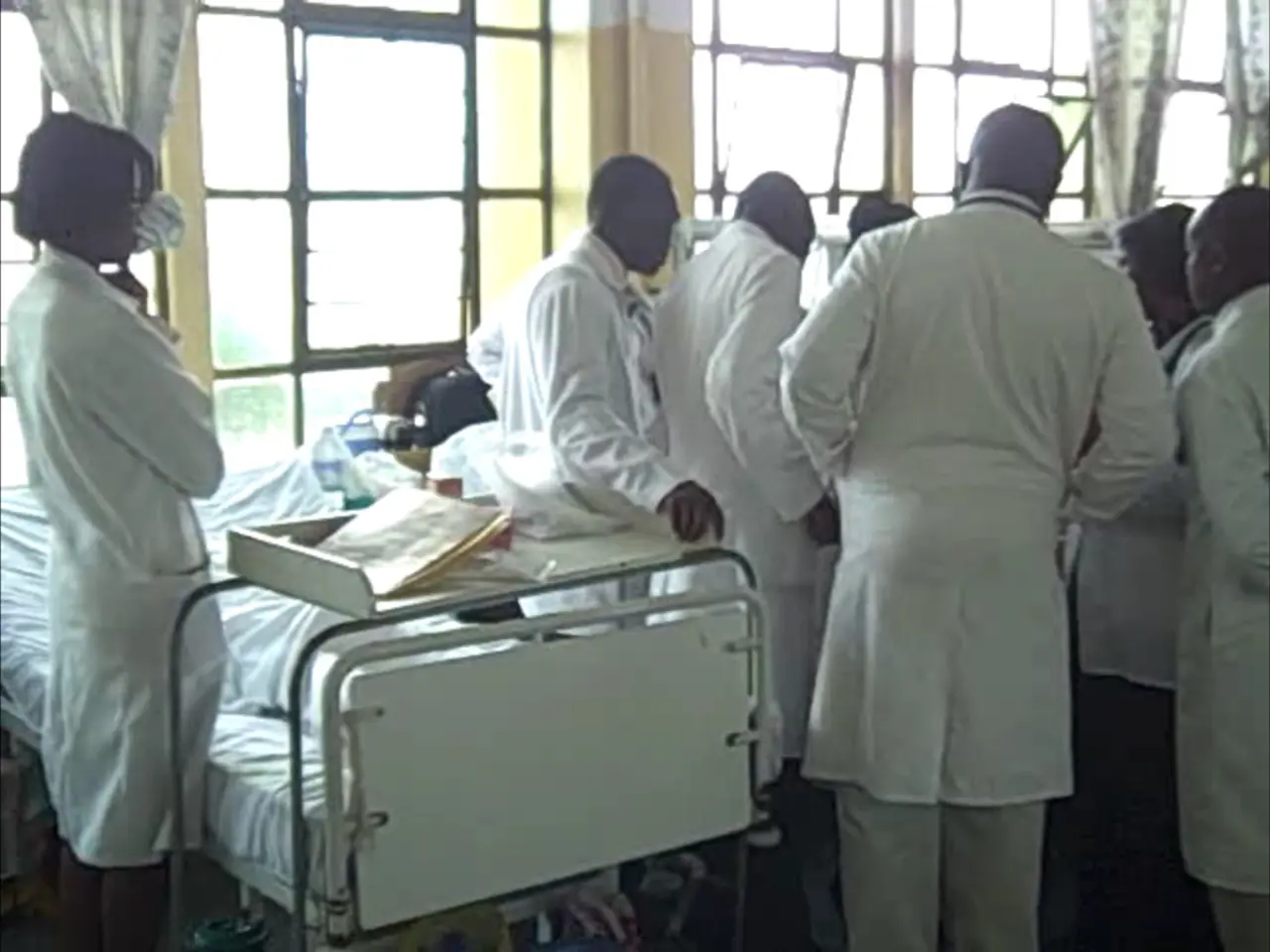Persisting Physician Shortage Causes Difficulties for Hospitals in Baykalia
=========================================================================================
The Far Eastern Federal District (FEFD) is facing a significant challenge with high staff turnover and a severe shortage of medical personnel. This issue is primarily attributable to several factors, including outmigration of young professionals, harsh climatic and geographic conditions, transport and infrastructure challenges, and a historical lack of incentives compared to other regions.
In the Sakhalin Oblast, job seekers on average expect a salary of 150,000 rubles, while the median salary for doctors stands at 144,500 rubles. However, in Zabaykalsky Krai, doctors are offered an average salary of 101,200 rubles. The situation is similar in Primorye and Buryatia, with Yakutia offering a median salary of 120,100 rubles for doctors. The Amur Oblast and Kamchatka both offer a median salary of 120,000 rubles for doctors. In contrast, in the Magadan Oblast, the median salary for doctors is 135,000 rubles.
The outmigration of young specialists, including medical personnel, to central regions of Russia in search of better income, social benefits, and career opportunities is a significant factor contributing to the staff shortage. The extreme weather, permafrost, seismic activity, and remote location in the FEFD increase the difficulty and cost of living and working in the region, making it less attractive for medical staff to stay. Limited transport accessibility and high travel costs further complicate the situation, hindering both relocation and intraregional mobility for health workers and complicating medical service delivery.
Historically, the Far Eastern region attracted specialists due to comparatively better income, pension guarantees, and housing benefits. However, these incentives are now less competitive or insufficient to retain staff.
The government and regional authorities are working on creating attractive living and working conditions to incentivize personnel retention and recruitment. These efforts include preferential mortgage programs, maintaining higher income levels, and improving affordable high-tech medical care accessibility. Strengthening transport infrastructure and affordability would also improve regional connectivity, facilitating staff movement and investments in healthcare. Efforts to consolidate the population and stabilize the socio-economic environment are essential to reducing outmigration and ensuring a sustainable workforce.
While specific data on medical personnel turnover were not detailed in the search results, the general pattern of skilled labor shortage due to migration, living conditions, and infrastructure gaps applies directly to healthcare professionals in the district. In broader healthcare contexts, factors such as stress and burnout are significant causes of medical staff turnover globally, including nursing shortages in other regions, highlighting the need for focused support and improved work conditions.
In summary, the causes of high medical staff turnover in the Far Eastern Federal District are young professional migration to central regions, harsh living/working conditions, and infrastructural challenges. Solutions focus on improving socioeconomic incentives, infrastructure, and healthcare quality to attract and retain personnel.
Medical personnel in the Far Eastern Federal District are leaving for central regions due to better income and opportunities, with harsh living conditions and infrastructural challenges being contributing factors. To address this issue, the government and regional authorities are working to improve socioeconomic incentives, infrastructure, and healthcare quality, aiming to offer a healthier work-life balance that deter young professionals from migrating and attract fresh talent to the region. Implementing science-based strategies in medical practice and health-and-wellness initiatives could further improve the appeal of the Far Eastern Federal District as a desirable location for medical professionals.




